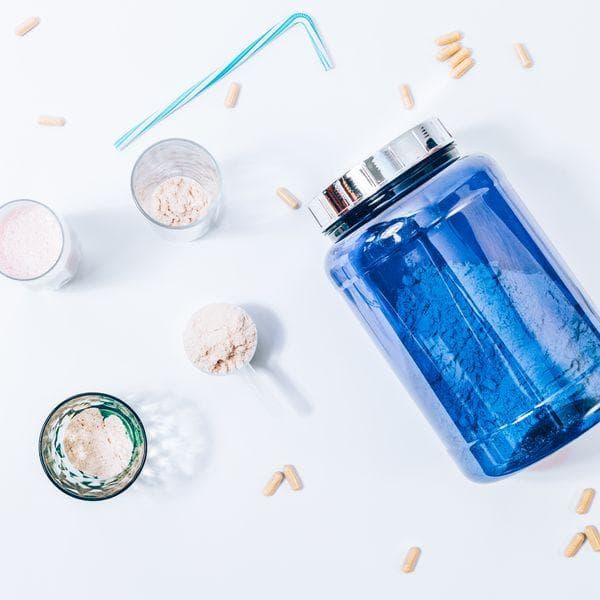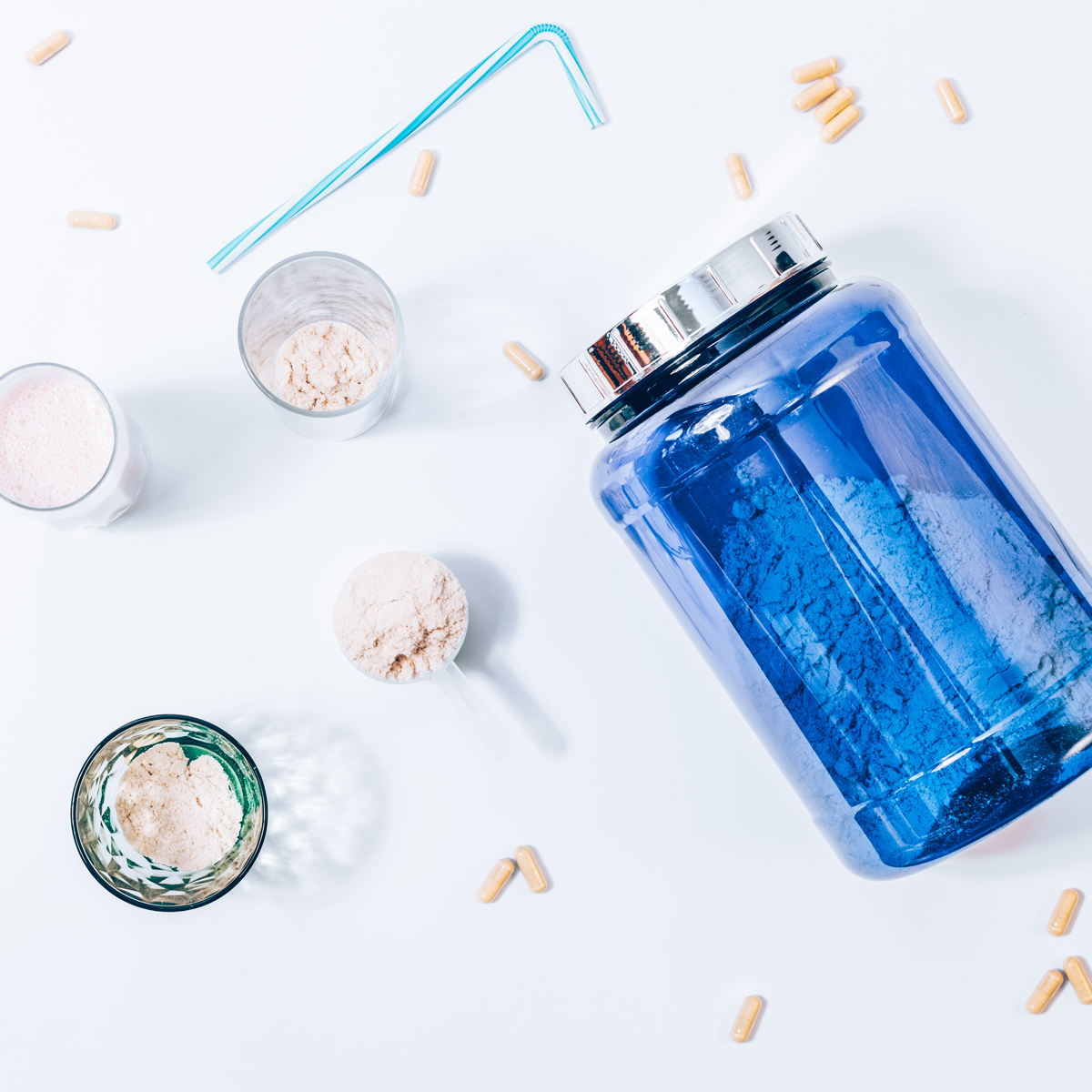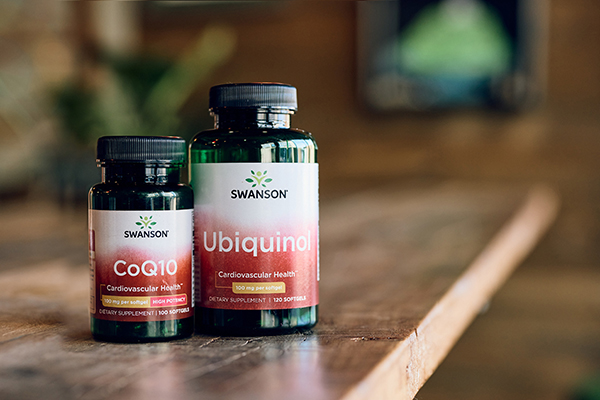Protein is a hot topic. This macronutrient is definitely having a heyday. Everyone from your coworkers and walking partners to your favorite Instagram stars add protein powder to their smoothies, lattes, pancakes, truffles—you name it!
When you reach for protein powder, you assume you’re doing something amazing for your body. It’s true that protein has many benefits to offer, but not all protein powders are created equal. Some of them are loaded with artificial flavors or sweeteners. Others use fillers to bulk up the product, so it seems like you’re getting more for your money, or they include inferior protein sources to keep prices low. And many of them taste awful or have a grainy or chalky texture.
None of those things do you any favors when you’re looking for a great-tasting, healthy, simple, high-quality protein powder supplement you can count on. So, let’s talk about the science behind protein powders, which ingredients to avoid, and why real food protein powders are better.
The Scientific History of Real Food Protein Powders
The protein powder industry had humble beginnings. In the 1930s, Eugene Schiff, a pharmacist who was focused on deriving beneficial nutrients from natural sources, found a way to separate the whey from milk—and whey concentrate, the first protein supplement, was born.1
Schiff and his subsequent company went on to explore the nutritional benefits of other real food-derived ingredients too, including wheat germ, brewer’s yeast and liver. Schiff and his company also claim responsibility for discovering rose hips as a superior vitamin C source.1
Later during World War II, non-perishable sources of protein were in demand and powdered protein from dehydrated foods became the answer. Powdered milk, eggs, and eventually soy protein powder soon followed as a convenient way to reinforce protein intake.1
In the 50s, fitness enthusiasts became privy to the muscle and weight-supporting benefits of protein. The demand that followed marked the beginning of the protein competition. The ingredient lists for powders swelled, becoming more and more complicated as artificial flavorings, added sugars and fillers made their way into the mix.
A lot has changed since then in the world of science and supplements, and we think it’s time to get back to better basics.
Protein Powder Ingredients You May Want to Avoid
You may be looking for a low carb, low sugar protein powder, or a protein supplement low in calories, but there are a few other ingredients you probably don’t want in the mix if you are looking for a clean protein powder, including:
Skim Milk Powders or Milk Solids: Many low-quality proteins use skim milk powders or milk solids as a cheap way to increase the volume of protein powder to make it seem like you are getting more product.
Artificial Sweeteners: There is ongoing controversy over whether or not artificial sweeteners are harmful.2 We believe it’s best not to put artificial ingredients in your body if you can avoid it, including artificial sweeteners like aspartame, which commonly show up in protein powders.
Maltodextrin or Dextrin: This is another ingredient used as a filler in protein powders to make them seem like a better value.3 It is a white powder made from corn, rice, potato starch, or wheat, but despite its plant-based ingredients it is highly processed.3 Volume doesn’t equal quality!
Xanthan Gum: Xanthan gum is a thickening agent often added to modify the texture of protein powder. Xanthan gum expands in the intestines and is also used as a laxative.4 The World Health Organization has set a maximum intake per day of 10 mg/kg as a food additive, so keep an eye out for this ingredient in your protein powders.4
Enriched with Fiber: If your protein powder is enriched with additional fiber, make sure it’s clean, plant-based fiber from greens like kale, otherwise it may only be there as a bulking agent and may contribute to digestive disturbances.
Non-Organic Soy: Soybeans are a complete, plant-based protein, but 94% of the soybeans grown in the US are genetically engineered.5 If you opt for a soy protein powder, make sure it is organic or labeled non-GMO.
Hydrogenated Fats or Oils: Some manufacturers add hydrogenated oils to protein powders to make them seem creamier, but the trans fats in hydrogenated oils can contribute to heart health concerns.6
Gluten: Not everyone is on a gluten free diet, but if you are sensitive to gluten keep an eye out for gluten in protein powders. Some of them contain wheat protein derivatives, so look for protein powder that is labeled gluten-free to be safe.
Science and a New Era of Protein
Scientific advancements have brought us more effective ways to derive protein from natural sources, even from plants! Mr. Schiff was on the right track many decades ago, and it’s possible now more than ever to deliver extremely high-quality protein from the wholesome simplicity of real food ingredients.
When Swanson’s scientists and dietitians set out to create our next generation of protein powders, we had very specific goals in mind. We sought to create superior, complete protein powder supplements using simple, whole food ingredients and nothing artificial—and they had to taste delicious. We wanted to offer both the best whey protein and the best plant protein in absolutely irresistible flavors. The result was Swanson Real Food Whey Protein & Real Food Plant Protein—high-quality, better tasting protein to power your modern life.
The Science Behind Real Food Whey Protein
Whey protein is a type of protein derived from milk. In fact, there are two proteins in milk—whey and casein, but whey is thought of as the superior milk protein due to its bioavailability and digestibility.7
If you’ve ever noticed a layer of liquid on top of your yogurt that needs to be mixed back in before you eat it—that’s liquid whey! Liquid whey is dehydrated into a fine powder to make protein that can be conveniently stored and mixed whenever it is needed. There are several ways scientists can extract whey from milk protein, including with enzymes, physically and with other more complex methods, plus there are different levels of extraction and protein isolation.8
What is Whey Protein Concentrate & Whey Protein Isolate?
There are two types of whey protein you’ll find in protein powders—whey protein concentrate and whey protein isolate. Whey protein concentrate retains more of the co-nutrients found in milk. And whey protein isolate is further separated to “isolate” the protein, removing the fat and lactose. Both types of protein are helpful. Whey isolate is lower in carbs and fat, and contains no lactose, but the additional milk-derived nutrients in whey concentrate are beneficial too.
Whey protein should be a simple, food-derived protein that nourishes our bodies. But many makers take this nutritious protein powder and bulk it up with fillers, preservatives, added sugars and artificial flavorings. The best whey protein powders are real food protein powder supplements that keep it simple. Swanson Real Food Whey Protein contains nothing artificial, just 22 grams of whey protein goodness in two irresistible, all-natural flavors—Vanilla Ice Cream and Chocolate Ice Cream.
The Science Behind Real Food Plant Protein
When most people think of protein, they think of common animal sources of protein like dairy and meats. But there are some rich, plant-based sources of protein that nourish our bodies too. And experts say that replacing meat-based protein in our diets with plant-based protein may benefit heart health.9 That’s all great news for vegans, vegetarians and anyone who wants to diversify their protein intake with plant-based protein.
The science behind plant protein powders all starts with nature’s richest sources of botanical proteins. Some plant-based protein powders dehydrate and grind up the whole plant ingredient (like organic soy powder made from organic soybeans), some concentrate the plant protein component to get a more potent protein, and others process the plants further to isolate protein molecules within them for the most concentrated plant protein. While plant protein isolates may provide more protein by volume, plant-protein concentrates undergo less processing and retain more plant-based goodness.
It’s also important to know that not all plant sources of protein are complete proteins. That means some of them don’t contain all 9 of the essential amino acids our bodies need but can’t make on their own. When you’re shopping for a plant-based protein powder, choose a complete protein powder supplement to cover all the bases.
Plant-based complete protein powders typically include several vegan ingredients that together provide all 9 of the essential amino acids you need, and they may include some of nature’s best sources of complete protein, including sacha-inchi (a superfood seed) or quinoa.
Swanson’s Real Food Plant Protein provides 20 grams of protein in a complete plant-based protein powder made from pea protein, brown rice protein and sacha inchi protein. It’s available in two amazing, all-natural flavors—dark chocolate and vanilla—and offers a full serving of veggies in every scoop with no artificial flavors or sweeteners.
Real Food Nutrition for Modern Life
Swanson Real Food Proteins are a wholesome way to power your modern life with better-tasting, cleaner, more natural protein nutrition. They’re available in both plant and whey formulas to fit every lifestyle, plus the delicious flavors make your daily protein truly feel like a treat. Try them today and see for yourself! We offer a 100% money back guarantee, so it’s completely risk-free.
Learn more about how protein can help you be your best self in Protein Benefits, The Best Types of Protein & How Much Protein You Need, and check out Real Food: A Revival or a Revolution? to learn why real foods and real food supplements are more than a trend.

About Lindsey Toth, MS, RD
Registered Dietitian, Swanson Health
Lindsey is a nationally recognized registered dietitian and nutritionist with a soft spot for pie. She empowers people to take charge of their health by finding the balance between the pleasure and nourishment in food.
Her philosophy is that you should take care of your body because it’s the only permanent home you have. It’s what inspired her to pursue a career in nutrition and, ultimately, led her to Swanson Health.
Sources
1 Splendid Specimens. The Weston Price Foundation. https://www.westonaprice.org/health-topics/splendid-specimens-the-history-of-nutrition-in-bodybuilding/ (09/14/2018)
2 Sugar substitutes: Health controversy over perceived benefits. US National Library of Medicine. https://www.ncbi.nlm.nih.gov/pmc/articles/PMC3198517/#ref3 (09/14/2018)
3 Is Maltodextrin Bad for Me? Healthline. https://www.healthline.com/health/food-nutrition/is-maltodextrin-bad-for-me#nutritional-value (09/14/2018)
4 Xanthin Gum. WebMD. https://www.webmd.com/vitamins/ai/ingredientmono-340/xanthan-gum (09/14/2018)
5 Is soy good for your health? Medical News Today. https://www.medicalnewstoday.com/articles/320472.php (09/14/2018)
6 Trans fat is double trouble for your heart health. Mayo Clinic. https://www.mayoclinic.org/diseases-conditions/high-blood-cholesterol/in-depth/trans-fat/art-20046114 (09/17/2018)
7 Whey Protein. University of Michigan Medicine Health Library. https://www.uofmhealth.org/health-library/hn-2933008 (09/17/2018)
8 Separation, extraction and fractionation of milk protein components. J. L. Maubois. Le Lait, INRA Editions. https://hal.archives-ouvertes.fr/hal-00929030/document (09/17/2018)
9 Nitrogen balance after a single oral consumption of Sacha Inchi (Plukenetia volúbilis L) protein compared to soy protein. A randomized study in humans. US National Library of Medicine. https://www.ncbi.nlm.nih.gov/pmc/articles/PMC5955778 (Accessed 09/12/2018)
These statements have not been evaluated by the Food and Drug Administration. These products are not intended to diagnose, treat, cure or prevent any disease.





